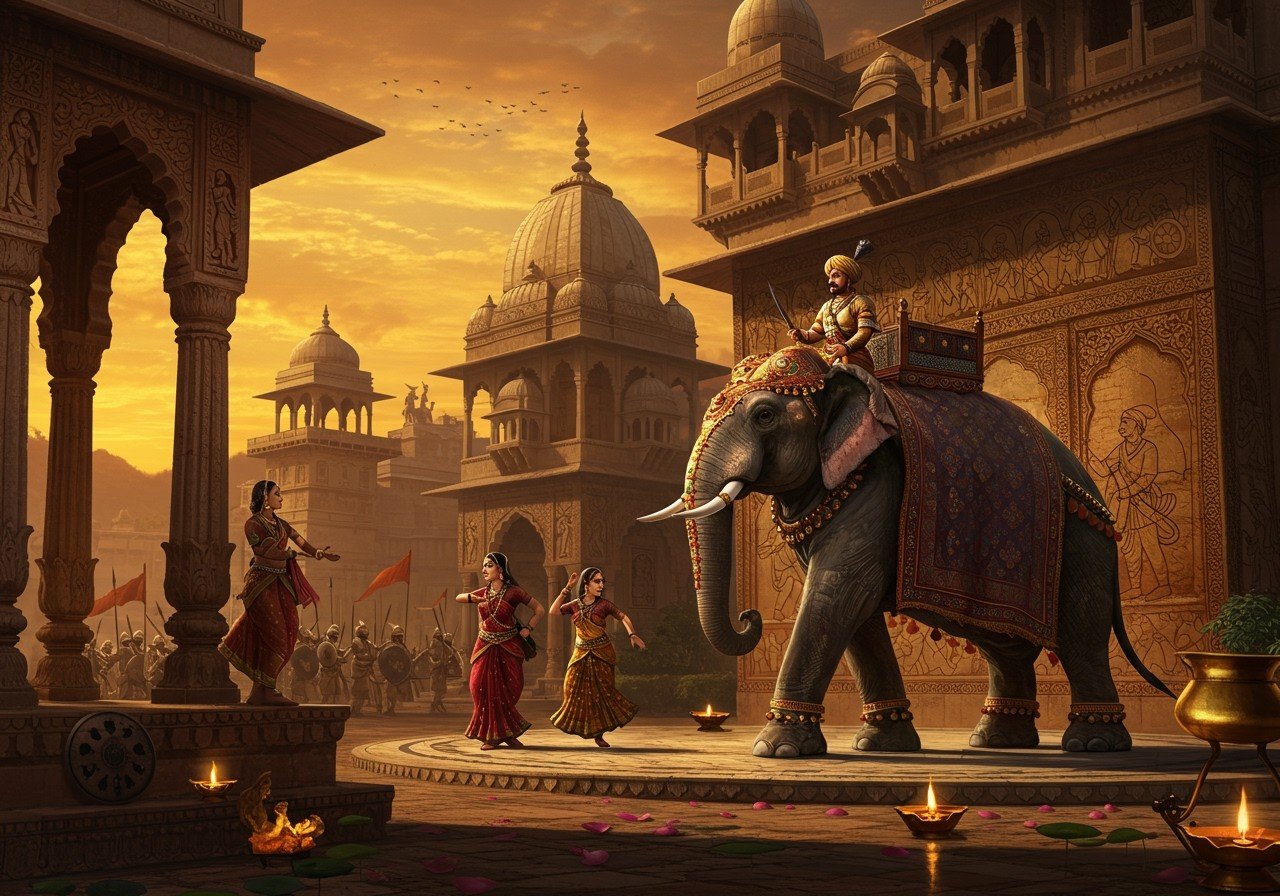
The Maukhari Dynasty: A History and Guide aims to provide a comprehensive understanding of the Maukhari dynasty, its historical significance, and its impact on Indian culture. Learn about the rise and fall of this ancient dynasty, key figures, and notable achievements. This guide is designed for culturally rooted Indians who value tradition and historical knowledge.
Origins and Rise of the Maukhari Dynasty
The Maukhari dynasty emerged in Northern India around 554 CE. Their reign centered around Kanyakubja, modern-day Kannauj. Initially vassals to the Gupta Empire, the Maukharis seized the opportunity to declare independence as Gupta power waned in the mid-6th century. This transition was significantly influenced by Hari Varma, the dynasty’s founder. The socio-political landscape of the time, with numerous small kingdoms vying for dominance, facilitated the Maukhari dynasty’s expansion and influence across much of Uttar Pradesh and Magadha.
Key Rulers and Their Achievements
The Maukhari dynasty boasted several influential rulers who left an indelible mark on history:
- Ishvaravarman: Known for significantly expanding the dynasty’s territorial control. His reign marked a period of significant expansion and consolidation of power.
- Sarvavarman: A celebrated military leader who spearheaded numerous successful campaigns. His military prowess contributed significantly to the dynasty’s strength and influence.
- Avantivarman: Implemented key administrative reforms that strengthened the kingdom. His reforms focused on improving governance and consolidating the dynasty’s hold over its territories.
Beyond their military and administrative achievements, these rulers were patrons of the arts, culture, and religion, fostering the growth of Hinduism and Buddhism, constructing temples, and promoting education.
Maukhari Dynasty’s Cultural and Religious Influence
The Maukhari dynasty played a pivotal role in shaping Northern India’s cultural heritage. Their patronage of arts and literature spurred significant advancements in these fields. Architectural developments also flourished during their reign, from 554 CE to 606 CE.
Religion formed a cornerstone of their rule. They extended their support to both Hinduism and Buddhism, commissioning the construction of temples and monasteries. Education thrived under their rule, with scholars and poets finding patronage in the Maukhari court.
Decline and Fall of the Maukhari Dynasty
Several factors contributed to the decline of the Maukhari dynasty:
- Internal Conflicts: Disputes within the ruling family destabilized the dynasty. These internal power struggles weakened the dynasty’s cohesion and ability to govern effectively.
- Succession Issues: Challenges related to succession further weakened central authority. The lack of a clear and undisputed line of succession created instability and vulnerability.
- External Pressures: Growing pressure from rival kingdoms, including Harsha’s Vardhana dynasty, ultimately led to their downfall in 606 CE. The rise of powerful rivals put immense pressure on the Maukhari dynasty, eventually leading to its demise.
Despite their decline, the Maukhari dynasty’s contributions to culture and administration left a lasting legacy on Indian history.
Maukhari Dynasty in Hindi and English Literature
The history of the Maukhari dynasty is well-documented in both Hindi and English texts. Historians have extensively chronicled their rule, highlighting key figures and pivotal events, providing valuable insights into their contributions. These works serve to preserve the legacy of this significant era in Indian history.
Relevance of Maukhari Dynasty for UPSC Aspirants
For UPSC aspirants, studying the Maukhari dynasty is essential. Questions pertaining to this dynasty frequently appear in the history and culture sections. A strong understanding of key rulers, achievements, and cultural influences can prove invaluable.
Effective preparation involves focusing on major themes and events. A comprehensive grasp of ancient dynasties like the Maukharis provides a crucial foundation for understanding Indian history, a key component of competitive exams.
Conclusion
The Maukhari dynasty occupies a significant place in Indian history. Their rise from vassals to independent rulers demonstrates resilience and strategic acumen. Key rulers like Ishvaravarman, Sarvavarman, and Avantivarman shaped their kingdom through military, administrative, and cultural achievements. Their patronage of arts, culture, and religion left an enduring impact on Northern India. Despite their decline, the legacy of the Maukhari dynasty continues to be remembered and respected. For UPSC aspirants, understanding this dynasty is crucial for gaining valuable insights into India’s rich historical tapestry. Exploring the Maukhari dynasty enriches our knowledge and deepens our appreciation for our heritage.
Poojn.in, India’s largest cultural goods and services store, offers a wide range of products connected to India’s rich cultural heritage. Explore our collection today and bring a piece of history into your home. Visit www.poojn.in now.
Kandariya Mahadeva Temple
Marble Idols


